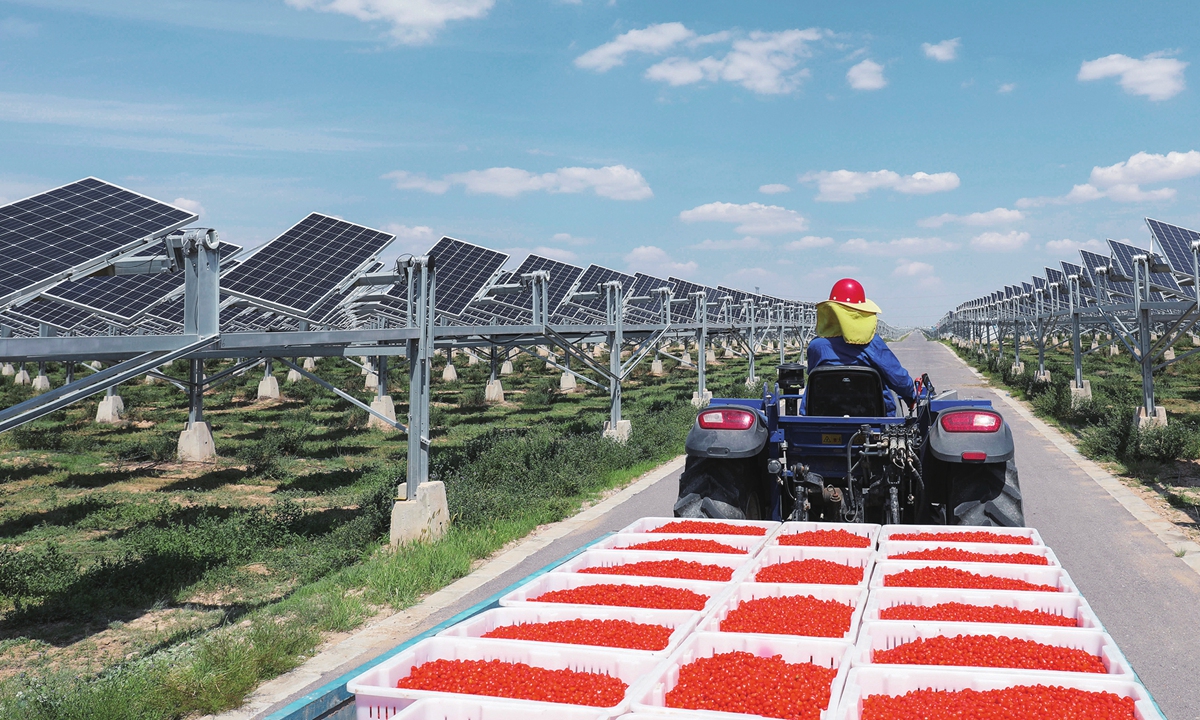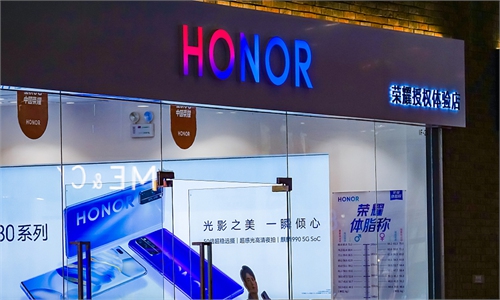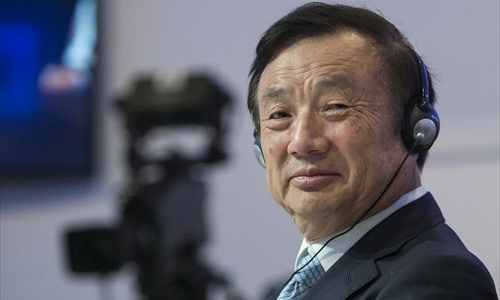SOURCE / PRESS RELEASE
Technology coexisting with nature

Photo: Courtesy of Huawei
Over the next ten years or even longer, environmental protection will become an important factor affecting the sustainable development of society, and information and communication technology (ICT) will continue to shoulder a heavy responsibility in this field. As the world's leading provider of ICT infrastructure and smart terminals, Huawei has always been actively fulfilling its social responsibilities, using technological innovation as the foundation for solving environmental problems, and proposing the green protection concept of "let technology coexist with nature," and contribute to sustainable development.
To increase the use of renewable energy, reduce carbon emissions, promote the circular economy, protect nature with technology, and allow technology to coexist with nature - Huawei refuses to slow down. .
Integrating ICT into the energy industry is one of the key forces in accelerating the transformation of renewable energy. Huawei continues to integrate ICT technology into photovoltaic technology and launched the first artificial intelligence-based photovoltaic inverter, which greatly improves the conversion efficiency of photovoltaic systems.
In Jujuy, a province on the northern plateau of Argentina, photovoltaic power plants supported by Huawei's smart photovoltaic solutions have been put into production, generating approximately 660 million kilowatt-hours (kWh) of electricity each year, providing clean power to 160,000 households. The power station ended Jujuy's long history of purchasing electricity from other provinces, allowing the local area to achieve self-sufficiency in electricity, and brightening the lives of local residents.
On the other side of the Earth, also with the help of Huawei smart photovoltaics, a 300-megawatt photovoltaic power station has been built in northern Saudi Arabia to power 45,000 local households, reducing carbon dioxide emissions by 430,000 tons per year, and making the first step to transform from traditional fossil energy to clean energy.
Whether in pastures, woodlands, fish ponds, or in the Gobi Desert, Huawei, through continuous technological innovation, and working with global customers and partners, is creating a "greener" world.
Reduce carbon emissions, help green development
Let ICT technology become a new balance between productivity improvement and environmental friendliness, and exploring new development models that are environmentally friendly, energy-saving and emission-reducing is one of the directions Huawei's pursuing.
In order to reduce the energy consumption of 5G networks, Huawei and global operators have deployed an energy-saving solution called "PowerStar." For example, in East China's Zhejiang Province, the program helped operators save 12 percent of the power of the main equipment of the wireless network, saving 26 million kWh of electricity each year.
In the 2020 Global System for Mobile Communications Association (GSMA) Awards, the program also won the "Best Mobile Innovation for Climate Action" award.
In terms of wireless sites, Huawei has introduced an all-outdoor solution. A pole can hang all wireless equipment, power supply equipment, and microwave equipment outdoors, without the need for air conditioning and computer rooms. Compared with traditional solutions, site energy consumption is reduced by 40 percent.
In the field of optical transmission, Huawei's unique optical fiber printing technology can print 1,000 optical fibers onto an A4 paper-sized optical backplane. Using this technique, only one device is needed in place of the traditional nine devices, while power consumption is reduced by 60 percent.
Promote circular economy and practice green concepts
Plastic is one of the most difficult parts to reuse among all electronic product materials. Since 2013, Huawei has widely adopted bio-based plastics in a variety of mobile phones and watches. Among them, more than 30 percent are refined from castor oil, which can reduce carbon emissions by 62.6 percent compared to traditional plastics.
Huawei insists on using recycled paper or fiber raw materials that comply with the responsible forest certification (FSC). Since 2018, Huawei has used a total of 306 tons of certified paper. According to the calculation that 1 ton of paper requires about 5 cubic meters of wood, it is equivalent to supporting the sustainable management of 76.55 acres of forest. Huawei's product packaging also chose 100 percent degradable environmentally friendly soy ink.
Huawei has more than 3,000 service centers around the world to provide convenient maintenance services; cooperate with the industry's leading scrap suppliers to handle waste electronic products responsibly and environmentally, and reduce the need for new resources by extracting raw materials for reuse; Since 2017, Huawei has collected and processed more than 5,000 tons of electronic waste through its own recycling channels.
Since 2012, Huawei has successively built photovoltaic power stations in its factory in Dongguan, located in South China's Guangdong Province, East China's Hangzhou Research Institute, East China's Nanjing Research Institute and other places. In 2019, the annual output of photovoltaic power plants in Huawei industrial park reached 13.57 million kWh, which is equivalent to reducing carbon dioxide emissions by 11,000 tons.
Throughout the manufacturing process, Huawei uses intelligent energy management technology for industrial enterprises to monitor and warn electric energy and current use. When the equipment is not in use, and the unit energy consumption shows that it exceeds the limit, it will automatically adjust. In 2019, Huawei saved a total of 19.2 million kWh of electricity during the manufacturing process and reduced carbon dioxide emissions by 16,000 tons.
In terms of logistics and transportation, Huawei has built four global supply centers in China, Europe, Dubai, and Latin America, and built national-level central warehouses in 112 overseas countries, effectively shortening the distance between the departure place and the destination, and creating a green logistics system. Huawei also reduced the demand for air freight, reducing the proportion of air freight from 8.7 percent in 2016 to 6.3 percent in 2019.
As a provider of ICT infrastructure and smart terminals, Huawei knows that technology and nature are never at opposite poles. While the company continues to contribute to the society, it is also expanding its own development space. If a company wants to gain an advantage in industry, it must take a long-term view, persist in innovation, and embark on the new track of green, environmental protection and sustainable development, and find its own green and sustainable development path.
Letting science and technology coexist with nature has become the common environmental protection concept of 200,000 Huawei people. Huawei will continue to use the power of technology to make more contributions to nature, mankind, and the planet.
The author is the vice president of Huawei's Public Affairs and Communications Department. Huang Weiqing, manager of Huawei's Public Affairs and Communications Department contributes to the story.


